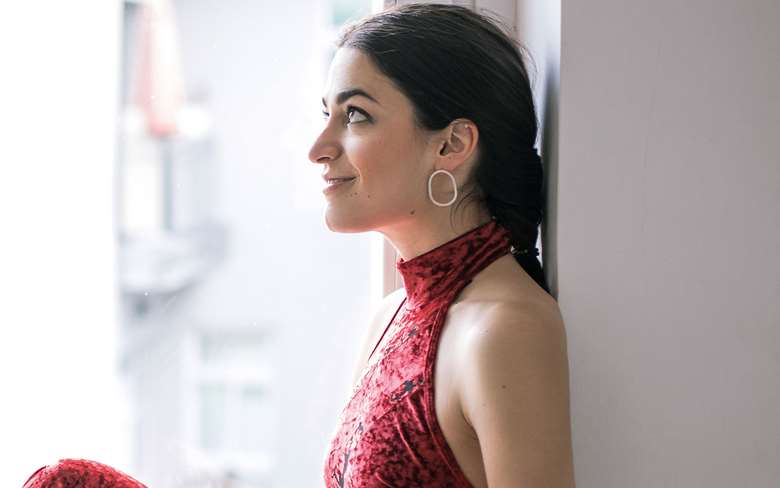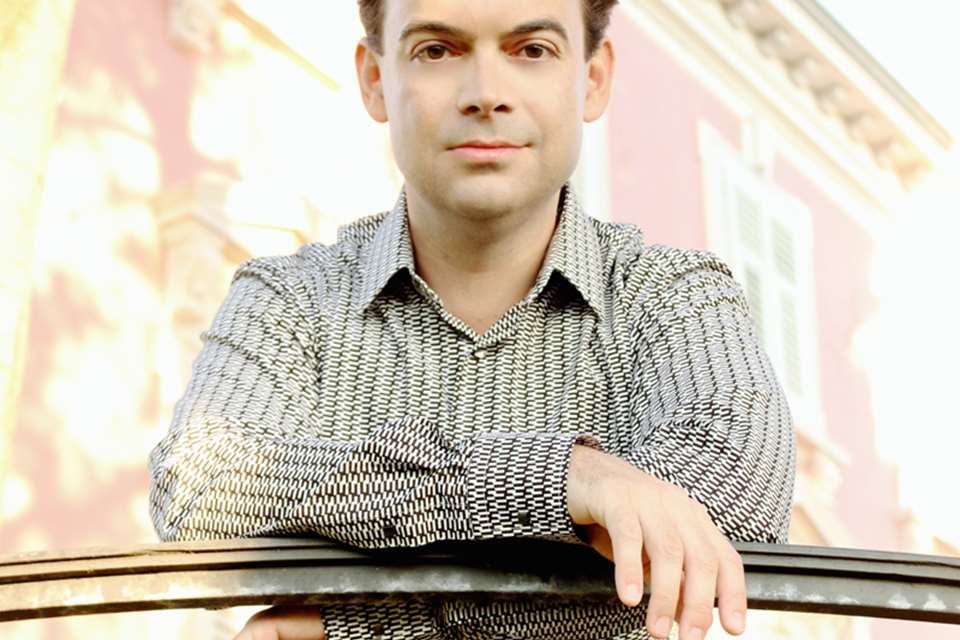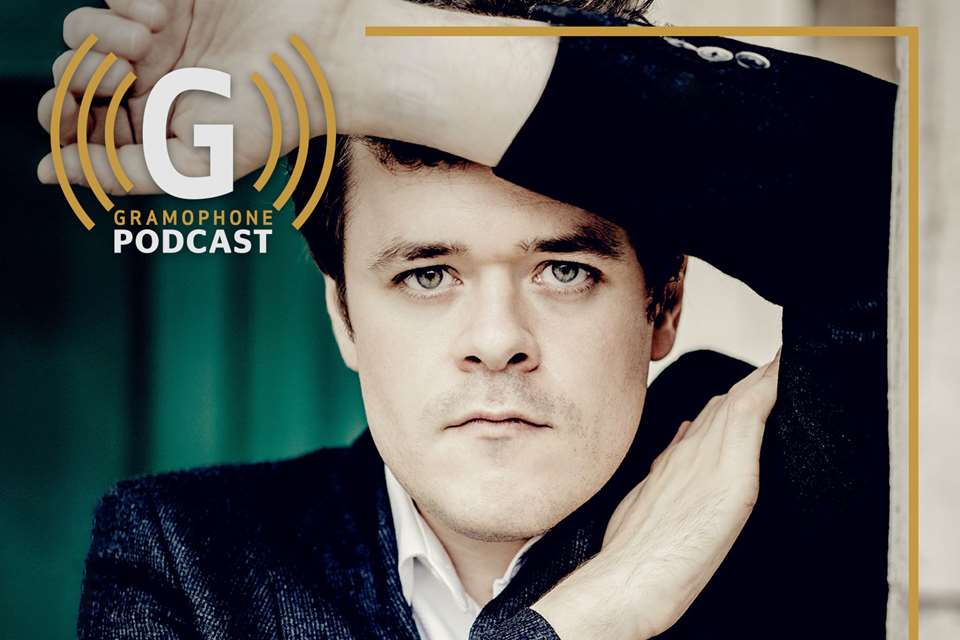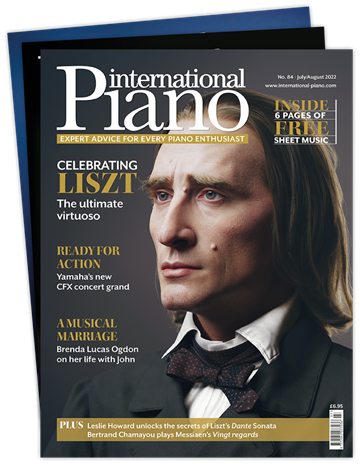Saskia Giorgini interview: ‘I strongly reject the idea that Liszt is loud and redundant and not honest’
Peter J Rabinowitz
Thursday, June 29, 2023
Saskia Giorgini talks about exploring the poetic side of Liszt’s multifaceted musical personality

‘I have no idea what kind of pianist I am,’ says Saskia Giorgini, with what I’ve come to recognise as her characteristically disarming laugh. To me, that confession comes as a surprise: of all the up-and-coming pianists I’ve heard over the past decade or so, she’s the one with the strongest interpretative personality. Perhaps ‘strongest’ isn’t the right word – ‘most individual’ would be more accurate. For in a world of escalating virtuosity, Giorgini stands out for the patience, subtlety and large-scale judgement of her work.
Let’s begin with her large-scale judgement. The occasion for our conversation is the release of a new all-Liszt album on Pentatone. It’s a follow-up to her earlier and enthusiastically received recording of Liszt’s complete Harmonies poétiques et religieuses – and it reveals the same preference for complete cycles, rather than individual pieces plucked out of them. Thus, the new programme gives us all of the Liebesträume rather than simply the celebrated third, all of the Consolations, all of the Caprices-valses, and so on.
‘My favourite occupation is to create as much difference in colours as I can’
Why? She offers a whimsical comparison: ‘When I go and buy ice cream, I wouldn’t just get one flavour. I would just get as many as I could. So why not do all three of the Liebesträume?’ But there are, of course, more serious musical reasons for why she wants ‘to have as complete an experience’ as possible: ‘I like the sort of musical expression that’s eventful, where you come to understand that you have gone through a process. For example, Harmonies poétiques et religieuses is powerful in this way because during the long time it takes to play the whole cycle, the music goes through changes and different experiences, and you go through changes, too.’ She particularly appreciates the opportunity to expand her own personal development with music that’s tied to emotions she has ‘no personal experience with, like war or terminal illness. This opens so many intellectual doors to think about different approaches and possibilities.’

Saskia Giorgini (photo: Ville Hautakangas)
In addition, she points out, there’s a formal argument for playing complete cycles: the way you play (and hear) a piece depends on its context, and when you uproot a work from its environment, ‘it has a completely different feeling’. She gives Funérailles, from Harmonies poétiques et religieuses, as an example. ‘Funérailles on its own is very dramatic.’ With her hands, she draws a huge arc to show its climactic peak. ‘But if you have it in the cycle, is it really the climax? To me the climax is Pensée des morts: this was what gave birth to the whole cycle. If I think about Pensée des morts and Funérailles, I ask myself, “What are they about?” One is watching life and death, and getting some philosophical reflection on it in the end; the other is about human suffering.’ Placing Funérailles in context, in other words, ‘changes your perception of it. You will not play it in the same way. You will not go from zero to one hundred, because you have already come through so many things.’ She continues: ‘I have a similar discussion with people who say, “In Bénédiction de Dieu dans la solitude, there should be more of a climax.” And I reply, “Are you sure?” Because it’s not the end – it’s a moment, and then comes Pensée des morts.’
Giorgini not only sees the connections between pieces in a cycle – she also discovers unexpected connections among pieces that weren’t published together. Her new album, for instance, ‘was supposed to be shorter pieces, very romantic pieces, everything quite intimate’. But she follows the Consolations, the Waltzes and the Liebesträume not with, say, the Petrarch Sonnets (which would be a conventional fit) but with the two Legends: St François d’Assise – La prédication aux oiseaux and St François de Paule marchant sur les flots. I tell her that that’s not what I would have expected, and that it lifts the recital’s trajectory out of the ordinary.
She laughs. ‘Yes, Liszt was a man out of the ordinary!’ She goes on to explain how the Legends really do fit into the course of the programme as a whole. Yes, on the surface, they are more virtuosic: ‘The Legends have lots of notes, and they are exhilarating; they are incredibly exciting.’ But that virtuosity can coexist with religious experience. Hearing them is ‘like when you look at one of the miracles, or you see these beautiful pictures of Mary, and you have the feeling of awe and religious ecstasy – that specific state of altered perception and euphoria that is described as happening to saints, when they have visions, a union with the divine, or the feeling of being at one with the all. In Romanticism, they had this idea, which tends to be overlooked, of religious ecstasy where you reached the edge of sexuality. Liszt was alive during those times. And the religious happenings like St Francis of Assisi talking to birds or St Francis of Paola walking on the water – these are miracles. How can you express them, if not with exultation?’ This sort of virtuoso writing, the virtuoso approach to religion and religious ecstasy, ‘is very close to the Liebesträume, which have these moments – as in No 3 for example – where it’s the same sort of thing. It’s just expressed in another way and addressed to someone else.

Exulting in Liszt: Saskia Giorgini takes her time in music rich in contemplation (photo: Christine Rechling)
‘I love the coexistence of the Legends – a man talking to birds – and these Waltzes, which are completely careless, just pure energy. Even the Valse mélancolique [the second in the set] has a sort of lightness. To me, they are all looking at the same thing, just from different perspectives.’ Furthermore, she points out, in actuality the Legends, for all their ‘lots of notes’, are not stylistically ‘very far from the other works on the album. They’re not like the Mephisto Waltz or the Hungarian Rhapsodies, not like the late pieces, not like the very serious religious ones.’ Of course, Giorgini’s is not the only way to play the Legends – but it conforms to her vision of Liszt as a man and a composer: ‘I strongly reject the idea that Liszt is loud and redundant and not honest.’
Her sympathy for long spans of music may have some of its roots in her childhood. ‘My dad used to tell my brother and me lots of stories before going to bed, so there was lots of storytelling in my childhood, and also thinking about different ways of what could happen to a person. Because of this, storytelling is very close to my heart.’ Add to this her preference for long novels, and you see a deep connection between narrative and the way she thinks about musical structure. ‘Every piece has a sort of development: things happening, and then some sort of conclusion.’ But pieces are different in ‘the language a composer chooses to convey this. They are different in how much they go into detail, and how much they decide to give time to certain things happening, whether it’s more about the content or more about the form or it’s a perfect balance. What I look for is to have a perfect overview of all these elements.’
Giorgini sets out these musical narratives with remarkable patience. Her playing is not always slow (although it often is); but she’s never rushed, even though she consistently maintains a strong sense of momentum. I ask whether this reserve of patience comes naturally, and, again, she laughs. ‘No. I had to become very patient. I’m very impatient, actually. So I have to discipline myself. To focus on patience used to be very unnatural, so I deeply enjoy having learned how to deal with it.’
‘Practising has become a sort of therapy. It calms the thoughts, and you learn how much it is about the process. Sometimes it takes a whole year to get through one idea’
This, too, goes back to her childhood: ‘I was born in Torino to a Dutch mother and an Italian father,’ she begins. ‘We moved to the countryside when I was four. From what they tell me, I have the impression this was because I was a bit hyperactive, a bit wild as a child. This is why I think they introduced me to music. My mom had read about Mozart being played to enhance the development of the foetus. So she always played music before I was born, and when I was one or two, there was always music in the house. And because I liked it – and liked singing a lot, I was always singing, quite loudly – they suggested that I start playing an instrument. In Torino there was a Suzuki school. It was mainly for string instruments, but one of the teachers was a piano teacher. And so I started with this method – very intuitive, with almost no theory.
‘Practising has become a sort of therapy. It calms the thoughts, and you learn how much it is about the process. Sometimes it takes a whole year to get through one idea.’ In fact, sometimes it can take a lot longer, ‘Finally, after – I don’t know – ten years, I understood late Beethoven. But it’s nice when you notice that it sometimes takes a long time to mature and learn. It has a lot to do with self-exploring, and if you really want to get into depth with music, you have to deal with the choices that you make in your own life. It’s very much part of a personal journey.’
Giorgini’s patient attentiveness to the music’s long spans does not, however, appear to dampen her interest in more local issues, especially issues of sound. Indeed, what I find most striking about her playing is its tonal quality: her gorgeous legato, her sense of colour, and especially her dynamics. None of this, of course, has come easily. To begin with legato, in her booklet notes for her recording of Schubert’s Die schöne Müllerin with Ian Bostridge, she calls herself an ‘illusionist’. That was, she says, especially because that music is so ‘sparse’ – but I suggest that much of the magic of her playing more generally comes from the way she creates such seamless legato lines. The lack of sustain is, of course, a well-known limitation of the instrument, but, she says, ‘it frustrates me less and less. The antidote is to create tension with anything that you have at your disposal. It’s really agogic and timing control. Clearly the piano has a short life of sound, but it does have a line, and then chords and harmonies make some sounds that last longer than they would on their own. So once you develop an ear for that, you can work around it.’
And colour? ‘I like to imagine an orchestra and lots of singing. So my favourite occupation, once I have an idea of how I want to do something, is to create as much difference in colours as I can.’ Does this mark her as a potential Debussian? We’ll find out soon, since as well as a scheduled album devoted to the enigmatic, dark pieces about grief that Liszt wrote late in his life, she’s planning one devoted to Debussy as well.
Finally, with respect to dynamics: it’s immediately evident from her crushing performance of St François de Paule marchant sur les flots that Giorgini is not a small-scale pianist. But she is a musician who takes piano – the dynamic marking as well as the instrument – very seriously. ‘It gives depth to the range: the wider you can get, the more you can create.’ She elaborates: ‘I always imagine the process of playing a piece for someone as drawing scenery. You start by putting up the base, showing them the limits of the piece, and also of the instrument. And then you work within these limits. What piano can the instrument afford and what forte can there be that fits the music? Then everything is done within this area. I think it’s an ideal to have it as broad as possible, so that things can happen inside. If something is very loud, and it goes to the most intimate pianissimo, you can die. It’s important that you cherish those areas of expression.’
I don’t want to leave the impression that Giorgini only cherishes those vast areas of expression where the colours are rich or where music goes from loudest to softest – she appears to cherish far more restricted spaces, too. My favourite moment is the one where, a few minutes into the First Legend, the chattering of the birds – already quiet to begin with – suddenly turns to silence as St Francis enters the field. It’s a breathtakingly beautiful passage that crystallises the essence of her art.
Breathtakingly beautiful – and innocent as well. That innocence is also reflected in the photos of Giorgini holding and releasing doves that decorate the programme booklet for this new Liszt. ‘I wasn’t sure in the beginning,’ she says, in part because, quite reasonably, she was afraid it might seem like kitsch. But then she was struck by the idea that, beyond its connection to the First Legend, ‘the white bird is a symbol of purity or peace or reconciliation’. And that fits the collection: ‘Even the waltz music is about comforting oneself and dealing with troubles, and digesting things that happen to you in life.’ The process of going through the photo shoot – and here the idea of process returns – was a revealing one. There were a dozen or so doves. ‘The first one or two, they just escaped, because I didn’t know how to hold them. I was afraid I would squeeze them if I wasn’t careful. Towards the end, I would open my hands, and they would not leave any more. They were very calm and soft, and they would just sit in my hands. And this feeling was completely new. And then I remembered, it’s connected to childhood and holding puppies. Something very basic happened.’ Something very basic happens when you listen to these recordings as well.
This article originally appeared in the June 2023 issue of International Piano. Never miss an issue – subscribe today












